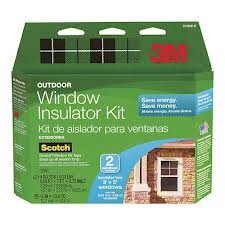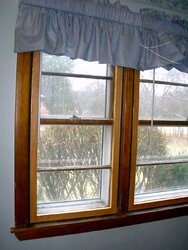Thanks for the great response. Your old house sounds a lot like mine. Actually had the windows replaced thinking they were a problem and nope we still get the same phenomena you did.
I feel like I am some window treatments and a ceiling fan away from some real warmth. That and keeping some bedroom doors closed to reduce the amount of wall footage that touches the outside like you say. Sitting in your living room basking in the cold air exchange of a 0 degree and 30 below wind chill outside via your window really blows.
Bingo. Even though our winter temperatures aren't as challenging as yours I know exactly what you mean here. We were told, when we bought this pellet stove, that it would "run us out of the house." The stove is rated to heat 2000 sq. ft. and we installed it in a single story house with 1420 sq. ft. The pellet stove has the potential to run us out of the house if it's 60'F and sunny.
Truth be told we probably should have bought a different/higher BTU pellet stove for our application but, on the other hand, the Napoleon is pretty miserly with pellets at its optimum setting. The stove isn't the most expensive on the market and we aren't ripping through pellets at a phenomenal rate, so learning to hang on to the BTUs it generates saves us the most money.
This house had replacement windows installed when we purchased it so that much was done for us.
Addressing the attic insulation made a big difference for us. I've typed this story out so many times that I'm sure that the mods are sick to death of seeing it, but it's relevant to people with older construction houses. We had a company install a radiant barrier "tented" (stapled to the rafters) in our attic. Some very small nooks have the radiant barrier on the floor of the attic but most of the attic is "tented." Installation day was cold, gray/overcast, and windy with a low front moving in. We turned the furnace completely off because the house would be opened all morning with the crew coming in and out of the attic and the house to bring in insulation. I kept the pellet stove on and sat in the room with the pellet stove for warmth.
Temperatures dropped through the morning as they worked- and I was surprised to see that even though exterior temperatures were dropping, the house was basically opened to the elements through the front door, the attic door was opened, and the furnace was off, the temperature in the house ROSE as they covered the rafters and gables with the insulated radiant barrier material. The pellet stove was actually carrying the house for the first time.
That afternoon we bought rolled batting insulation and my husband installed it in the main part of the attic. The company had "tented" over the access to the little niches but since they had put the radiant barriers on the floors of those areas, over the existing insulation, we just let that be. I should note here that one of the reasons we went with this company instead of at DIY install was their proprietary product. It has insulation sandwiched in between two layers of radiant barrier. The radiant barrier material itself is more substantial and more durable than the mylar on the products available to us at big box home improvement stores. Most importantly, this material breathes- so it doesn't retain moisture. That's huge, especially if it is being simply laid on top of existing insulation.
The existing insulation in our attic- R19 batting insulation over top of the original rock wool in between the floor joists in the attic- was in good shape. My husband simply rolled R30 batting insulation over it cross wise.
That helped us immensely.
The next year we did some air sealing in the house, making liberal use of caulk, spray foam, and UL approved faceplate insulators for the outlets and wall switches. There are several FedGov web sites that provide guidance for air leak mitigation. They address the safe and proper use of caulk and foam sealant around electrical boxes and fixtures- be sure to look those up if you decide to air seal.
Since we've added the attic insulation and addressed air leaks, we've found that the pellet stove can carry the house on most of our heating days, BUT. The "bridging effect" of the brick-block-lathe-plaster walls re: conductive cold means that we are prone to condensation. The pellet stove alone simply does not move enough air in the house to evaporate the condensation on the windows. We use exhaust fans for cooking and during showers but that doesn't pull enough moisture out of the house to compensate for its tendency to condense moisture. We've found that this house is happiest when we allow the gas furnace to run for a couple of cycles once or twice a day.
I've tried using just the HVAC fan to circulate air, and the HVAC fan plus ceiling fans to circulate air, but it isn't enough. All we do with that is dissipate our precious pellet stove heat in the unheated duct work. The air flow isn't enough to evaporate air or to pull fresh air in through the cracks and crevices in the house to exchange enough air in the envelope. We really do need to let the furnace run for a couple of cycles with its higher fan speed and the added heat. That keeps the windows dry.
Also (and I can already hear the shrieking) if we are in a temperature place where we are relying heavily on the pellet stove and the outdoor humidity is low, I open up the house at least once a week and use all of our exhaust fans to blast the existing air and humidity out of the house. YES I KNOW THE HEAT LOSS! THE HEAT LOSS! But I find with this house that the simple exchange of air once or twice a week doesn't put us at a huge "heat deficit" in the house. If the heat sinks- the furnishings, the walls, etc.- are not allowed to cool down, a episodic air exchange doesn't put us behind the heating curve that much. The furnace and the pellet stove aren't trying to keep up with continuous leakage and they aren't trying to heat up cold walls, cold floors and cold furnishings. They heat up the "new" air and we are back on target.




